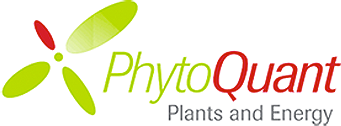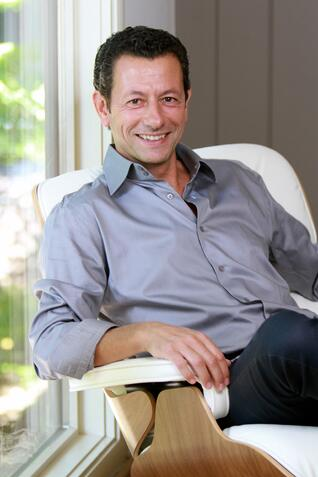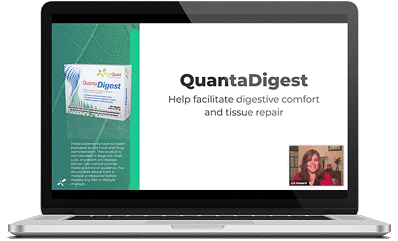

Journey to Wellness :
Tools for helping your patients achieve vibrant health
Presented by
Guillaume Caunegre of
The Osteotherapeutics Institute™
Guillaume Caunegre has had a successful practice for three decades in two countries. For the past 16+ years, PhytoQuant supplements have been an important part of his practice. We have found that his patients are raving fans.
We asked him to share with us the “secrets” to his success, especially in relation to how he has managed to forge such a special relationship with his patients and the trust he immediately establishes. He has graciously agreed to create a whole series of articles on taking his patients on a Journey to Wellness. He will be joining us as well for some of our InCircle Practitioner Learn with PhytoQuant sessions in the coming months. We hope you will find the processes he uses helpful in your practice. Stay tuned for more! – The Steiner Labs Team
Collaboration for Patient Benefit
Bringing Patients into the dialogue
It is often overlooked that the individual is the sole proprietor of his or her health. I have always told my patients to remember that they have choices and responsibilities.
A patient’s health is theirs alone. Consulting with medical doctors and health professionals should offer solutions and options to each patient, but it is the patient’s right, choice, and decision to follow the guidance, prescriptions, and treatment options. The patient needs to understand that if they want to see improvement, they will need to take an active role and maintain their health with
responsibility.
There is a considerable difference between working with a patient to assess health and identify opportunities versus looking to identify illness or disease. These are the two ends of the spectrum in patient interaction. Identifying and addressing illness and disease, unfortunately tends to be a one-way communication process. To address vibrancy of health and life along more of a scale encourages a two-way dialogue. Most health professionals will recognize at which end of the spectrum they approach their patients. Two-way dialogue can be a challenge, as so few of us are taught to listen to and understand subtle changes in our body functions. (I will address this in depth in my next article).
Collaboration to Serve the Patient
After three decades of holistic practice, I have been able to consistently link traditional medicine and alternative medicine practitioners in an effective communication loop to serve the patient’s best interest. This has included linking orthodontists, pediatricians, acupuncturists, physical therapists, naturopaths, internists, surgeons, and massage therapists, among others.It is far more interesting for us and far more beneficial for patients to work at the beginning of the health transformation process and focus on prevention rather than waiting for the consequences of dysfunctional health.
Every discipline of health care is needed and has something to bring to the dialogue. In a balanced world, health management would rely on this multidisciplinary therapeutic approach for prevention, support, and the ultimate relief for all patients. From that perspective, it is necessary to establish the patient’s baseline health and to monitor visceral functions. It is necessary and critical to have
valid diagnostic tools.
Assessing someone’s state of health can be done, medically speaking, in numerous ways, Scientifically, we can conduct blood tests, cardiovascular tests and medical imaging. The real key to the identification of issues may lie in more subjective observation and detective work in an intelligent collaboration with the patient. Most times, the clues lie in the subtlety of changes that have occurred over time that only the patient can identify for us.
Measuring Optimal Health
“Health” can be difficult to measure in traditional medicine. Western traditional medicine is not targeted toward optimal overall health, but toward finding established disease. This is in large part due to the development of therapeutic solutions that are designed to aggressively fight or eliminate the state of disease with drugs and surgery, which represent the main “weapons” in this fight. Alternative medicine approaches have been evolving over more than 3,000 years, providing time-tested holistic tools. Western science is discovering that Hippocrates’ philosophy that “all diseases begin in the digestive system” has never been truer. The prevalence of IBS, SIBO, Leaky Gut, depression through the Gut-Brain Axis (1), auto-immune disease (almost 70% of the body’s defenses reside in the gut (2) with emerging research indicating the connection between gut health and auto-immune diseases (3)), support Hippocrates’ early understanding of our bodies and the interplay of overall health and gut health.
I have found that correcting micro-nutritional deficiencies is an effective cornerstone to address many maladies. Western diets overall and the use of chemical preservatives, coupled with soil-depletion and industrial farming practices have made even “good” foods less effective in providing the nutrients our bodies need. For the last 16 years, I have relied on PhytoQuant because they have the highest efficacy products on the market. I have witnessed first-hand the transformation PhytoQuant supplements facilitate.
Taking a multi-disciplinary approach to a patient’s care allows each practitioner to bring attention toward a specific organ, physiological function or anatomical part of the body. Every health discipline whether an MD, DO, DC, ND, RD, Acupuncturist, Nutritionist of Manual Therapist has their own specific tools and methodologies for assessment. Working in concert in a multi-disciplinary collaboration and including the patient in the dialogue will often yield the reward of a more effective patient outcome.
In today’s world, we see the emergence of new types of disease. This is linked to a depletion of micronutrients and is significantly more subtle than traditionally seen. To properly identify these changes, we need to work in a multi-disciplinary way with western and eastern medicine, traditional medicine and holistic, in non-traditional but time tested and proven ways. Therapeutic options are vast. Finding the right practitioner can be a challenge, and a special introduction may be required to access availability to busy therapists.
It is worth understanding how a freer way of choosing health care calls for participation, education, and dialogue from the patient. Such involvement often leads to reward, empowerment, and satisfaction for both the patient and the practitioners supporting them.
(1) The Gut-Brain Axis Explained in Plain English | Diet vs Disease
(2) Furness JB, Kunze WA, Clerc N. Nutrient tasting and signaling mechanisms in the gut. II. The intestine as a sensory organ: neural, endocrine, and immune responses. Am J Physiol. 1999 Nov;277(5):G922-8. doi: 10.1152/ajpgi.1999.277.5.G922. PMID: 10564096.
(3) Gut microbe drives autoimmunity | National Institutes of Health (NIH)
Learn with PhytoQuant
Every Other Thursday at 6pm EST
Thursday, February 25th Topic:
Sleep and Relaxation (Anxiety)
 Join us and fellow practitioners for an interactive 1 hour case study
Join us and fellow practitioners for an interactive 1 hour case study
where we spotlight a common client condition and discuss the
PhytoQuant difference.
